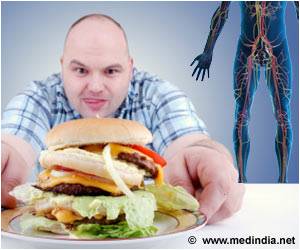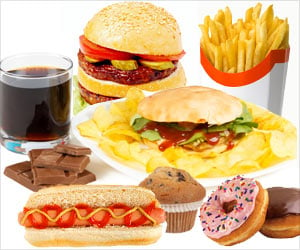Kids continue to receive unhealthy drinks and side items with their fast-food meals when they visit large restaurant chains, despite restaurants' commitments to offer healthier choices with kids' meals.

‘Kids still receive unhealthy drinks and side items such as sugary sodas and French fries along with their fast-food meals which may affect their health. Restaurants should be more serious about children's health and offer healthier kids' meal sides and drinks such as fruit and yogurt and 100 percent juice, low-fat milk, and water.’
Read More..




Study authors say children continue to receive these unhealthy options because many fast-food restaurants still automatically provide sugary sodas and French fries with kids' meal orders and that restaurants continue to widely promote their unhealthy options inside the restaurants on menu boards and signs. Healthier kids' meal sides and drinks available include fruit and yogurt and 100 percent juice, low-fat milk, and water.Read More..
"While most fast-food restaurants do have healthier kids' meal drinks and sides available, many do little to make parents aware of the healthier options or to encourage parents to choose the healthier options instead of unhealthy ones. If restaurants are serious about children's health, they will make the healthiest choice the easiest choice for parents and the most appealing choice for children," said Jennifer Harris, Director of Marketing Initiatives for the UConn Rudd Center, and lead author of the report.
The study surveyed approximately 800 parents in 2010, 2013, and 2016 about what they ordered for their 2- to 11-year-old child in the past week from one of the top four fast-food restaurants. Sixty-one percent of those surveyed were moms aged 25-40, and most had two or more children aged 2-11 years.
Since 2010, the four largest fast-food restaurant chains have pledged to offer healthier drinks and side options in kids' meals, and not list sugary soda as a kids' meal option on menu boards. A previous UConn Rudd Center study conducted in 2016 found wide variation in how well individual restaurant locations implemented those commitments.
Study authors say restaurants should automatically provide healthy drinks and sides as the default choices with kids' meals and point to the need for regulations that would mandate those policies.
Advertisement
In Louisville, Ky., legislation was recently enacted requiring healthier drinks as well as fruit, vegetable, whole grain, or lean protein as part of a kids' meal. Subway is the only fast-food restaurant studied that voluntarily includes only healthier side and drink options with kids' meals in their restaurants nationwide.
Advertisement
The study also found children are eating fast food more often. In 2016, 91 percent of parents reported purchasing lunch or dinner for their child in the past week at one of the four largest chains, up from 79 percent in 2010. Families visited McDonald's the most.
Study authors say low cost and/or increased value of fast-food meals, convenience, and easy access, and a documented increase in fast-food advertising to children could account for the increase in consumption of fast food meals.
"We know that fast food offers parents a convenient, affordable option for feeding their families. But restaurants have a responsibility to make these affordable, convenient foods healthier. Most fast-food meals--even kids' meals--have more fat, sugar, and sodium than children need, and eating this kind of unhealthy food can have negative health consequences over time, such as obesity, diabetes, heart disease, and other health issues," said Harris.
Other 2016 Findings in the Report Include:
- Nearly all parents responded positively to healthier kids' meal policies at the specific restaurant they visited and said the policy would make them purchase food for their child at that restaurant more often.
- One-third of parents who purchased lunch or dinner for their child at a fast-food restaurant did not purchase a kids' meal, and this was true for both younger children (ages 2-5) and older children (ages 6-11). They purchased regular menu items, which include adult-sized portions and tend to be less nutritious than kids' meal items.
- Fifty percent of children who received a kids' meal got a healthier side item, and 59 percent received a healthier kids' meal drink.
- In general, parents are purchasing healthier options for their younger children (ages 2-5) than for older kids (ages 6-11) at fast-food restaurants. Across all three years studied, parents were significantly more likely to buy only a kids' meal, and not another menu item on top of it, for a younger child than for an older child (64 percent versus 46 percent, respectively). Parents were also more likely to receive a healthier drink when purchasing a kids' meal for a younger child than for an older child (66 percent versus 50 percent, respectively).
- Some restaurants have implemented new practices that add on extra fat, sugar, and calories, such as providing desserts with kids' meals (some Dairy Queen and some Subway locations), or offering a dessert in place of a kids' meal toy (some Burger King locations).
"They should also make more meaningful changes on the menu. Fast-food restaurants have said they want to be part of the solution to childhood obesity. They can start by making the healthier drinks and sides the default options in kids' meals and introducing healthier kids' meal main dishes, which remain high in fat, sodium, and calories," she said.
Source-Eurekalert










